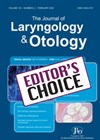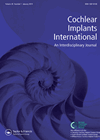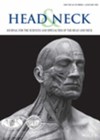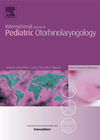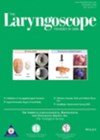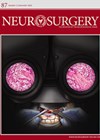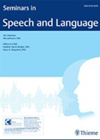
Journal Reviews archive for March 2021
Modifying two-week wait protocol for suspected head and neck cancer patients during COVID-19
As healthcare workers, we are committed to ensuring that our patients continue to receive the optimum care that we are set up to deliver. However, the last year has shown that we need to be mindful of balancing this with...
Effect of stimulation levels on speech recognition and auditory threshold performance
When programming a Cochlear® device, two measurements are normally assessed. T levels relate to the quietest sound the CI user can hear i.e. thresholds, and C levels are comfortable levels which are tolerable for the CI user. If these levels...
Preventing major postoperative haemorrhage following TORS
Transoral robotic surgery (TORS) has become an increasingly utilised treatment modality in the management of oropharyngeal squamous cell carcinoma (OPSCC). Postoperative haemorrhage, although uncommon, is a significant complication. To ameliorate this risk, transcervical ligation of branches of the external carotid...
Cobalt hip implants and auditory-vestibular outcome
Cobalt-chromium (Co-Cr), metal-to-metal hip implants were commonly used until several side-effects were reported due to an increased level of Co and Cr metal ions in patients’ blood. Although this type of hip replacement was almost completely abandoned, there are still...
Early cochlear implant activation and its effects on the cochlea
In this article, Alhabib et al consider the changes to electrode impedance with early device activation (day one) compared to conventional activation (day 30). Activation at day 30 is a cautious approach, which has been popular for many years. However,...
A 3D-printed endoscopic sinus surgery simulator – validity testing
The challenge of gaining sufficient experiential learning to successfully navigate the learning curve toward competence has long been a challenge in surgical education. The COVID-19 pandemic, and its impact on elective capacity, has presented a further challenge to the acquisition...
Hemilaryngopharyngeal Spasm (HeLPS)
The authors report an unusual case of hemilaryngopharyngeal spasm (HeLPS) with glossopharyngeal neuralgia with otalgia in a middle-aged female patient. Her symptoms included left-sided sharp, electric sensation like pain radiating from her left ear to the left side of her...
Predictors of diabetes insipidus post-hypophysectomy
Transient diabetes insipidus (DI) after pituitary surgery is not uncommon and its diagnosis fairly obvious. Permanent DI is rare and often depends on the neurosurgeon’s experience. This retrospective study describes a large series of patients with majority undergoing endoscopic transsphenoidal...
OSA is neuroprotective!
This interesting study supports the hypothesis of the protective effects of obstructive sleep apnoea (OSA) against ischemic events like stroke. The authors evaluated the impact of OSA with the presentation, hospital course and outcomes of patients with subarachnoid haemorrhage (SAH)....
Pain control for patients with chronic pain following surgery
There is an increasing number of patients with a background of chronic pain presenting to the otolaryngologist. Patients with chronic pain require extra consideration in postoperative pain control due to risk of tolerance and dependence. This article summarises postoperative management...
Show me the video: modelling for behaviour change
It is estimated that 2% of people in the United States have autism. The DSM 5th edition defines the autism spectrum diagnosis criteria as when an individual has social communication difficulties, as well as restrictive and repetitive behaviours. One intervention...
Can we get some satisfaction (in aphasia therapy)?
Patient satisfaction is associated with improved health outcomes, yet using surveys to collate information on satisfaction is limited by the types of questions asked. Satisfaction remains a broad concept but asking respondents more open questions allows service users to define...

